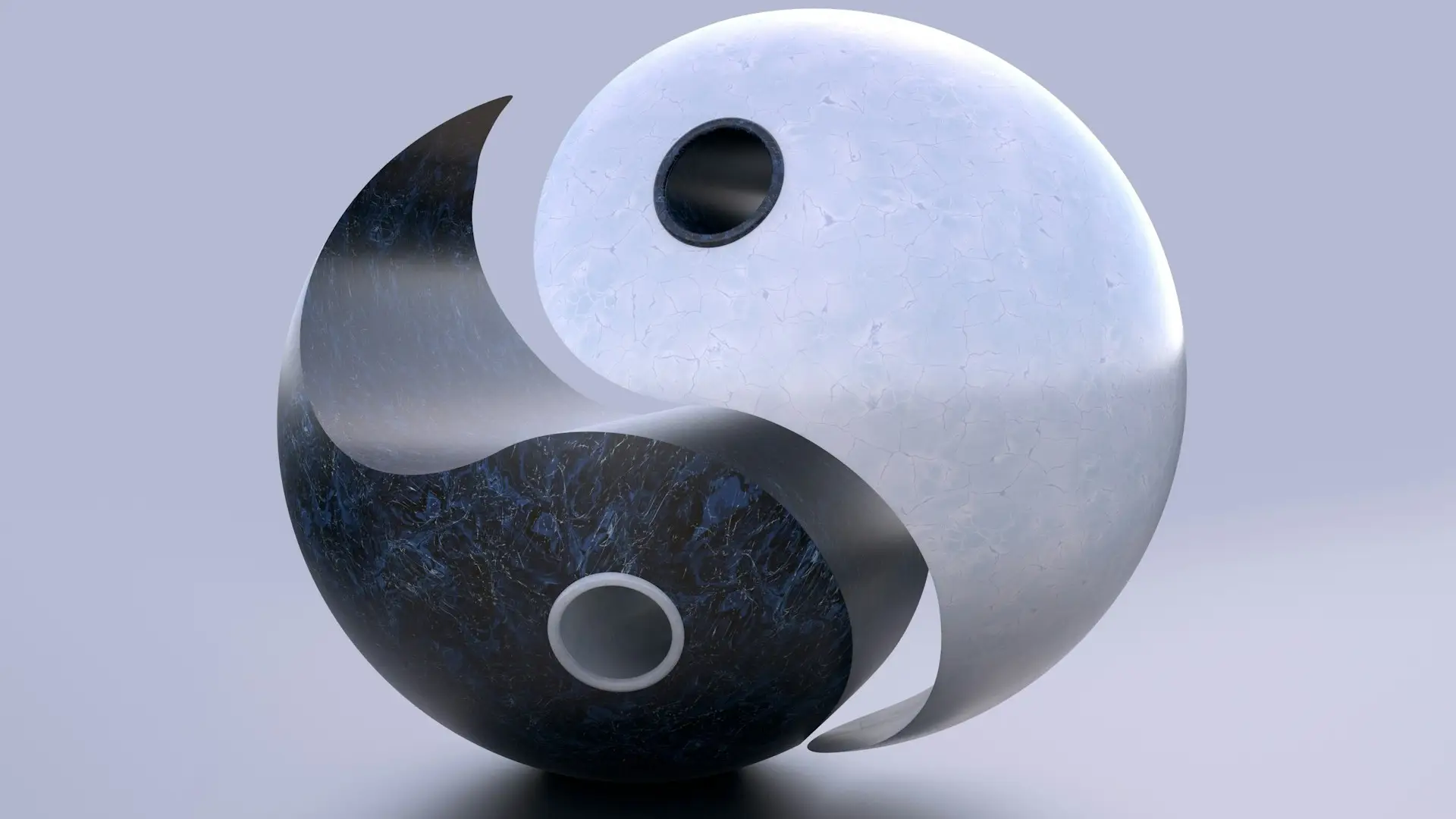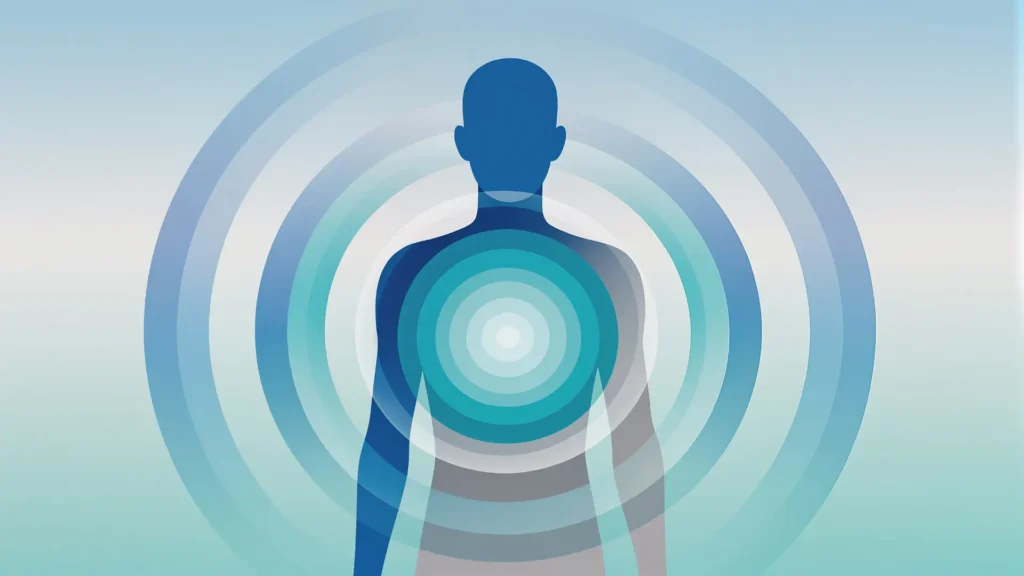The stress of modern life is not just a mental state; it’s a physical reality that takes up residence in your body. We often treat the mind and body as separate, but chronic mental and emotional pressure inevitably finds an outlet in our physiology. This is a process that can unfold silently over years, leading to a state where we are no longer consciously aware of the tension we carry.
How Stress Lives in Your Body
Your body is designed to handle acute, short-term stress through a process called the General Adaptation Syndrome. When faced with a threat, your system enters an “alarm” phase, followed by “resistance,” where it adapts to fight the stressor. In the modern world, however, stressors are often psychological and persistent, trapping us in a state of chronic resistance. This sustained activation means the body never gets the signal to stand down. The result is the accumulation of stress as chronic muscle tension—the perpetually tight shoulders, the clenched jaw, the stiff lower back. Over time, this state can contribute to systemic, low-grade inflammation, a biological process now linked to a host of long-term health issues.
What is a Body Scan Meditation
A body scan meditation is a fundamental mindfulness practice designed to systematically sweep your awareness through your entire body, part by part. It is a direct exercise in developing interoception—your ability to sense the internal condition of your body. Most of our lives are spent in a state of exteroception, with our awareness directed outward through our five senses. The body scan reverses this flow, guiding your attention inward to the rich landscape of subtle sensations: warmth, coolness, tingling, pressure, and tightness. The goal is not to change or fix anything you find, but simply to notice it with a curious and accepting attention.
Psychosomatics: The Mind-Body Connection
The principle that the mind (psyche) and body (soma) are inseparably linked is the foundation of psychosomatic medicine. This is no longer a fringe concept; the field of psychoneuroimmunology is the hard science that maps the precise pathways by which your thoughts and emotions directly influence your nervous, endocrine, and immune systems.
Ancient wisdom traditions developed their own sophisticated maps of this connection. The system of chakras, for instance, can be understood as a symbolic and energetic map of the body’s key bio-centers. These energy centers often correspond with remarkable accuracy to the physical locations of major endocrine glands (like the thyroid and adrenals) and complex neural plexuses (like the solar and sacral plexuses), illustrating an intuitive, ancient understanding of the mind’s profound influence on the body’s core regulatory systems.
Body Scan Meditation Step-by-Step
This is a practice of quiet observation. Find a place where you can lie down comfortably on your back without being disturbed for 15-20 minutes.
- Settle In: Lie on your back with your legs uncrossed and your arms resting alongside your body, palms facing up. Close your eyes and take a few deep, gentle breaths to signal to your body that it’s time to relax.
- Begin with the Feet: Bring your full attention to the toes of your left foot. Notice any sensations present—warmth, coolness, tingling, contact with your sock or the air. You don’t need to feel anything special. Just notice. Slowly expand your awareness to include the sole of your left foot, the heel, and the top of the foot.
- Move Up the Body: Continue this granular sweep of attention, moving slowly from your left foot up through your ankle, shin, calf, and knee, then to your thigh and hip. Now, bring your attention all the way back down to the toes of your right foot and repeat the process for your entire right leg.
- Scan the Torso: Shift your focus to your pelvis, lower back, and abdomen. Notice the gentle movement of your breath in your belly. Slowly guide your awareness up through your chest and upper back, paying attention to the area around your heart and your shoulder blades.
- Include the Arms and Hands: Bring your attention down your left arm to your left hand, noticing each finger individually. Then, repeat this for your right arm and hand.
- Focus on the Head: Scan your neck and throat, then move up to your jaw, mouth, nose, cheeks, eyes, and forehead. Acknowledge any tension you find without judgment. Finally, bring your awareness to the very top of your head.
- Conclude: Once you have scanned your entire body, hold your whole body in your awareness for a minute or two, feeling the sensation of being alive. When you are ready, gently wiggle your fingers and toes and slowly open your eyes.
Common Experiences
There is no “correct” way to feel during a body scan. The intention is simply to be aware of what is present. Some common experiences include feeling deeply relaxed, sometimes to the point of falling asleep, which is perfectly fine. You might also feel fidgety, restless, or notice parts of your body that feel numb or blank—this is also normal and often changes with practice. At times, bringing awareness to a tense area can bring up associated emotions. The goal is to allow all these experiences to come and go without resistance. My clients often experience a profound sense of reconnection with their bodies after just a few sessions, discovering a baseline of calm they didn’t realize was accessible to them. To make it even more interesting, I sometimes teach this technique to professional athletes to help them improve their kinetic awareness and sports performance.



